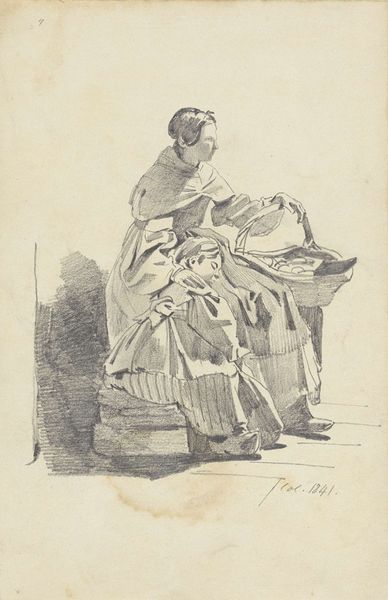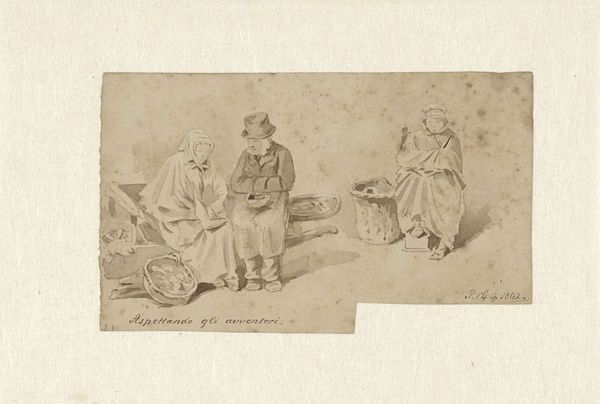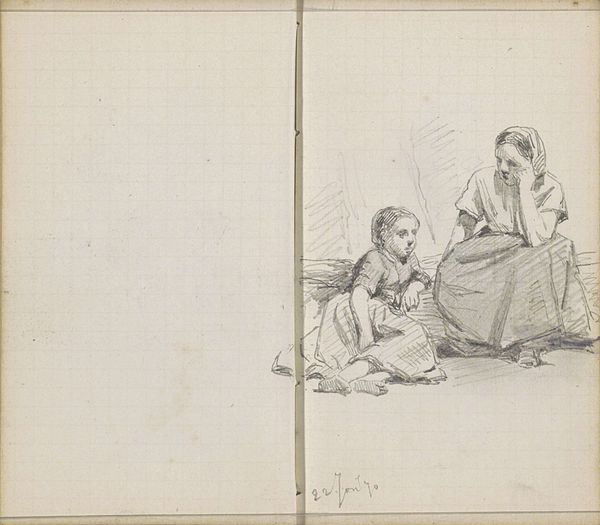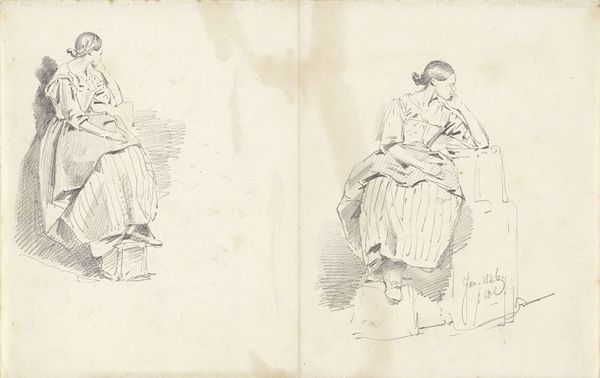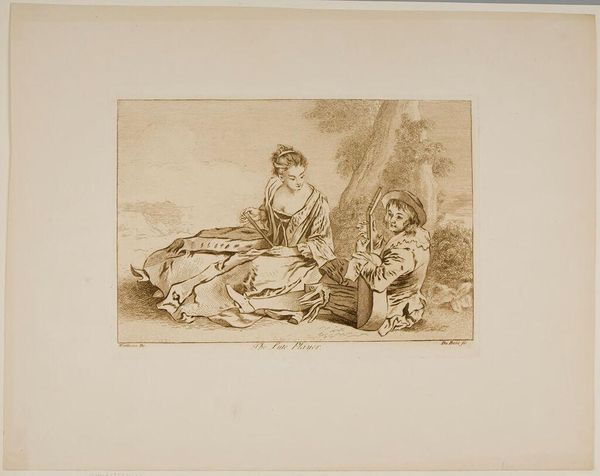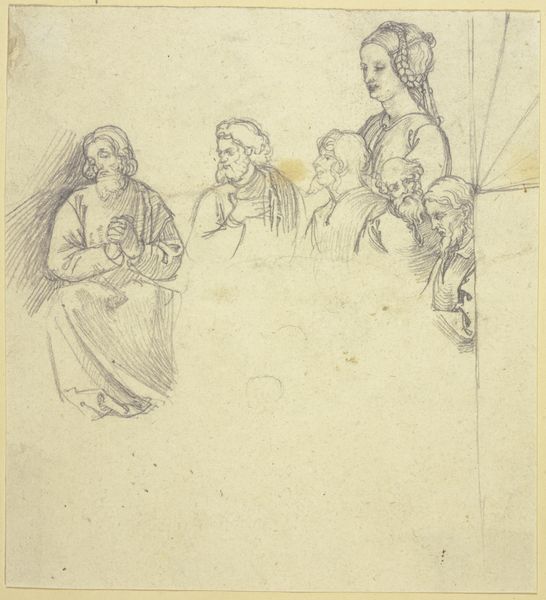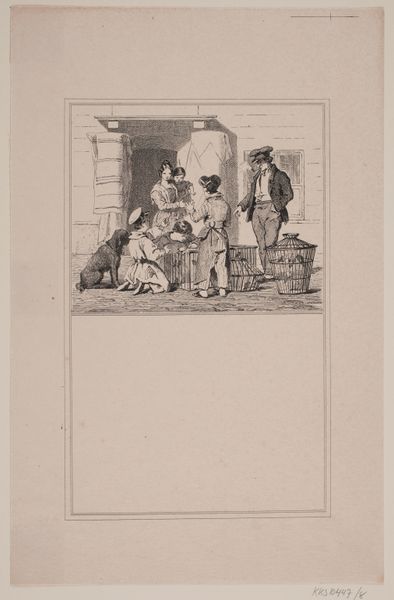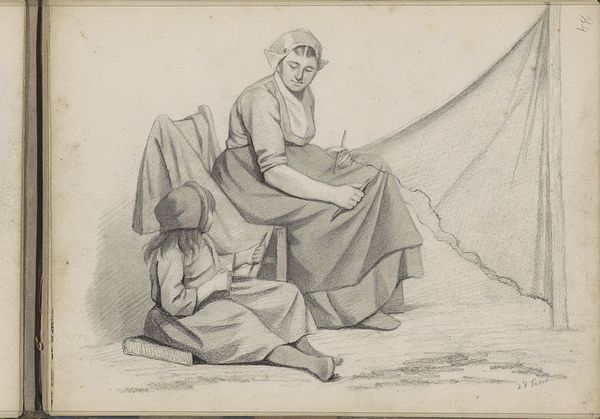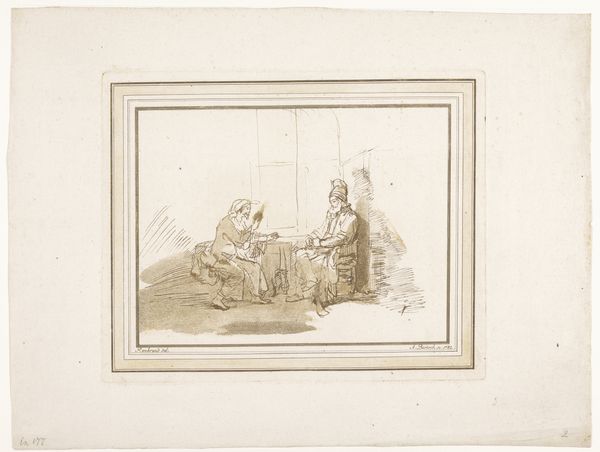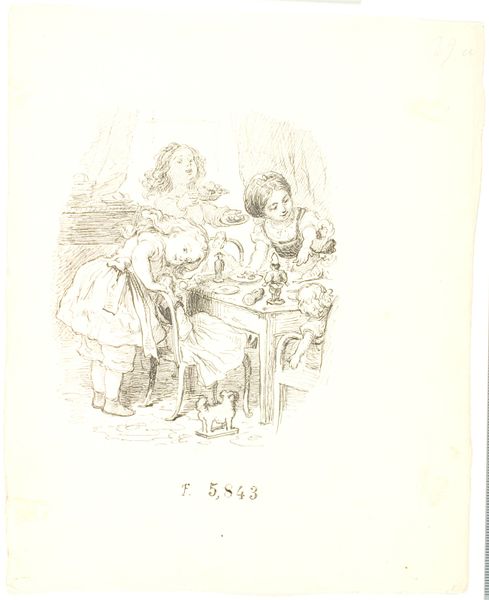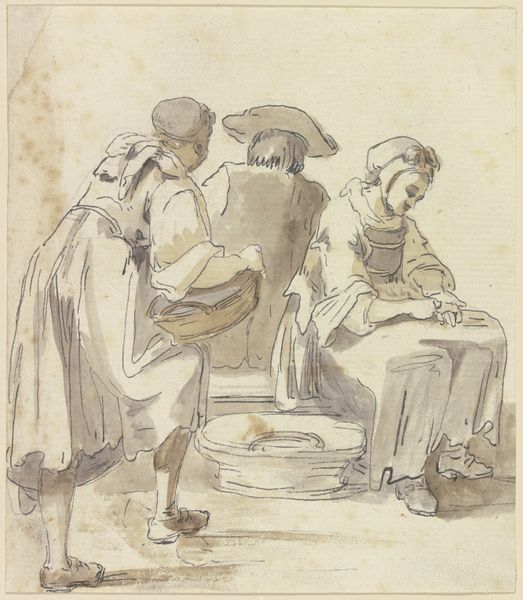
drawing, paper, pencil
#
portrait
#
drawing
#
pencil sketch
#
figuration
#
paper
#
pencil
#
genre-painting
Dimensions: height 309 mm, width 209 mm
Copyright: Rijks Museum: Open Domain
Editor: This is "Twee studies van een jongen en meisje met kruik" – or Two Studies of a Boy and Girl with Pitcher – a pencil drawing on paper by Pieter van Loon, created in 1843. It’s interesting to see two almost identical compositions right above each other. What do you make of that decision, and the depiction of labor here? Curator: The act of depicting the scene twice is intriguing, yes. It highlights the process of sketching, the artist exploring the same subject from potentially slightly different angles or focusing on distinct details, it all circles back to labor: the labor involved in making art, which is interesting considering that this is also the topic displayed on the scene. Also note that the tools and material themselves become prominent here, not merely the representation of a charming genre scene. Editor: I see what you mean! Focusing on the materials, I noticed the pitcher that they're holding. It's really front and center. Would that pitcher and whatever these two young people were working on be considered mundane, something made from common material? Curator: Precisely. And I think that's key. Consider how van Loon is choosing to represent, or study as the title indicates, what might have been a lower class's daily life activity with materials associated to labor in his period, while using the very materials and techniques of a bourgeois studio education. Editor: That’s fascinating! So it is like, what is traditionally "high" versus what is seen as "low", colliding into each other and, in essence, being almost questioned in this drawing. Curator: Exactly. We see here an early challenge to established hierarchies, a blurring of boundaries between fine art and craft through its raw, visible process and everyday subject matter. What have you learned today about the class relations? Editor: To analyze closely what we understand about production and class depiction by analyzing what is displayed, the tools used and who may be purchasing it at the end. Curator: I hope it inspired you to appreciate art more broadly and think critically!
Comments
No comments
Be the first to comment and join the conversation on the ultimate creative platform.
